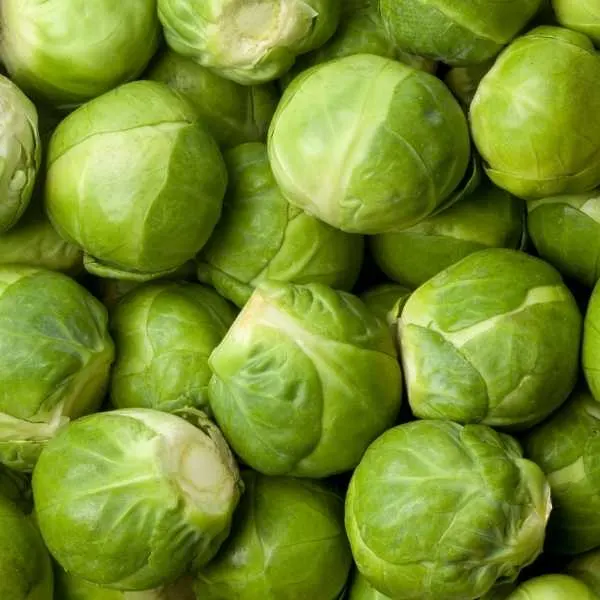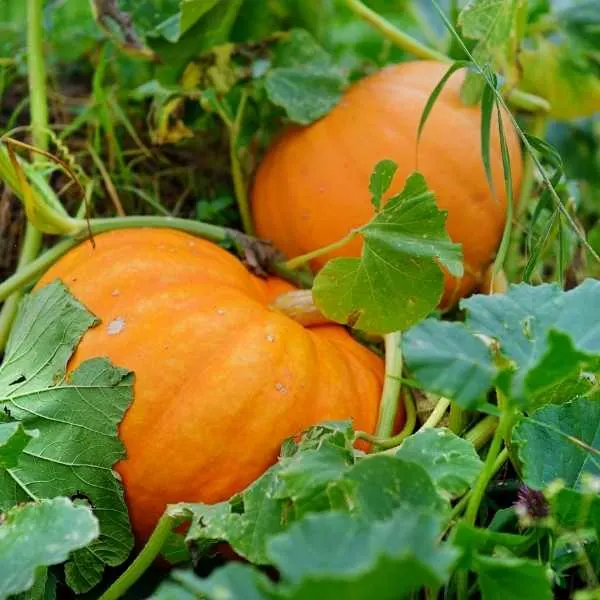Vegetables that Grow in Clay Soil
Did you know that vegetables can grow in clay soil? That’s right. The heavy, slimy, thick soil that you thought was only good for pots.
But with the right strategies, clay soil can be good for growing vegetables. In fact, there are vegetables that grow well in clay soil.

Scientists will tell you that the ideal soil for farming should contain 40% clay, 40% sand, and 20% silt; in other words, that is loam soil. But come on, that can only happen in utopia.
There are many people dealing with heavy clay soil in their gardens. And many blogs and books only sing the praises of the loam soil.
Should you, therefore, give up on gardening and think of other ventures such as pottery, using the clay that nature has given you?
No, there is still hope for you because there are vegetables you can grow in clayey soil. (You may want to read this article if you are looking for vegetables that grow in sandy soil).
Related Articles:
- Best Vegetables to Grow in Shallow Containers
- Best Companion Vegetables to Grow Together in Containers
Growing Vegetables in Clay Soil – It Takes Some Hard Work
The general consensus in scholarly material available today is that stiff clay is not the best soil for growing anything at all. It needs hard work to amend – you have to add organic matter, mulching, improve aeration, and drain waterlogged soils.
A report by the University of Vermont suggests starting off with cover before you can plant any crops on your clayey garden. You could start with cover crops such as oats and ryegrass.
Avoid planting crops that have big roots on clay soil because big rooted crops will need much more improved soil aeration to thrive.
Cole Crops – The Best Vegetables to Grow in Clay Soil

However, gardeners who have clay soils in their gardens will need to be selective in the type of vegetables they choose to grow.
Since they have shallow root systems that do not go more than 24 inches deep, Cole crops are the best vegetables to grow in clay soil.
Cole crops get all their water and nutrients from the topsoil. They were first grown in the Mediterranean region, known for its mostly clayey soils
Cole crops include:
- Cauliflower
- Brussel Sprouts
- Broccoli
- Cabbage
- Kale
- Collard
That being said, aside from cole crops, there are also a few other vegetables that do well in clay soil.
10 Vegetables that Grow Well in Clay Soil
#1. Cauliflower

You can grow your cauliflower in clay soils since it has high water retaining ability.
Growing the crop, though, might be a tall order for a gardener who lacks patience and does not have time to weed, water, fertilize and blanch the crop as it grows.
You should not plant your cauliflower in a land that has had other related crops such as cabbages, kales, Brussel sprouts, or turnips for the last four years.
Such plants would have depleted all the nutrients that cauliflower needs for its growth and introduced diseases that would affect your crop.
Carefully select your seeds or seedlings since they determine how good the yield will be and how tolerant to diseases the crop will be.
Avoid using hybrid seeds because they are not true-to-type and will not give a good yield as you would have expected judging from how the parents perform.
Test your soil constantly to determine what fertilizers to add to make it better for cauliflower growth.
Cauliflower does well in any soil as long as you add well-rotted manure. It needs a temperature of 50 to 70 degrees Fahrenheit.
Cauliflower also does well in a cool environment but not too cold since chilly weather can cause premature heading and stunted growth.
Exposure to too much sunlight, on the other hand, would discolor white cauliflower and make it lack that sweet flavor that you tasted in Indian curry.
Space your cauliflower plants 15 to 20 inches apart, with the rows spaced 36 to 40 inches from each other.
Best Cauliflower Varieties to Grow in Clay Soil
Various cauliflower cultivars that you can grow in your clay soil include:
- Snow crown – takes 50 days to mature and needs to be tied at the top.
- Imperial – takes 60 days to mature and needs to be tied to cover the curd.
- Cheddar – takes 68 days to harvest. It is self-blanching; therefore, no tying is needed.
- Grafitti – matures within 75 days and is self-blanching.
- Veronica Romanesco – takes 80 days to mature and is self-blanching.
If you are looking for a cauliflower variety you can grow with less work, then you can go for one that is self-blanching.
For non-self blanching cauliflower cultivars, tie the plant’s large outer leaves together loosely when the head is about 2 to 3 inches in diameter.
After this, the plant should be ready to harvest in 7 to 12 days.
For a non-self-blanching cauliflower, failure to cover will result in loss of color as well as tasteless cauliflower. Do not be late in harvesting; otherwise, the curd will turn coarse and inedible.
#2. Brussel Sprouts

Brussel sprouts, like broccoli, just need a well-drained yet water-retentive soil type.
They would, therefore, not mind your clay garden as long as you have generously applied organic manure and mulch so that the roots can have somewhere to hold and get air as they develop.
Brussel sprouts do well at a pH of 6 to 7 and can withstand low temperatures more than any other vegetable. The distance between individual crops is 24 inches, and 36 inches between two rows.
Pelleted seeds for germinate faster, and are easier to plant too.
If you are planting brussel sprouts during summer, protect your crops with a 50% shade cloth until the young seedling has about six leaves.
Crop rotation needs to be done with other crops that are not in the cabbage family if you want to get good yields.
#3. Kale

Kales also do well in clay soils, especially if you go for the cold-weather-tolerant varieties. To enhance aeration within the soil, you can dig holes into the soils. It would help if you also fed the kales with aged manure.
#4. Broccoli

Broccoli is a cool-season vegetable that does well in temperatures of between 65 to 75 degrees Fahrenheit and on level grounds.
It needs sunlight between 4 to 6 hours a day, and so you could plant it in pots and move it to a shade when it is too hot.
What a broccoli plant needs is well-drained yet moisture-retentive soil. If you can find a way to solve the drainage issue in clay soil, you are assured of a good broccoli crop.
The soil pH is of absolute importance and needs to be between 5.8-6.5.
Broccolis, mostly when young, are affected by insects such as flea beetles and diamond black moths that eat up the leaves, while cabbage maggots could cut the plant from the roots.
They are also susceptible to diseases such as black rot, blackleg, and club rot.
Most experts feel that most of these diseases are caused by low-quality seeds that are already infected.
So, make sure you only buy high-quality seeds from reliable sources.
#5. Swiss Chard

Swiss chard prefers temperatures ranging around 40 Degrees F. Just maintain this temperature and add lots of compost, and you’ll be good to go.
#6. Cabbages

Well known for the crunch that they introduce to your salads, cabbages are many farmers’ favorite. Can you plant them in your clayey garden?
Cabbages can do well in clay soil as long as you are ready to apply organic manure and mulch the soil.
It is also important to disk clay soil before planting cabbages to break the large pieces of clay bricks. Disking can be helpful for weed, pest and disease control.
Cabbages, just like broccoli, detest hot weather. They thrive in temperatures 60 to 65 degrees Fahrenheit and soil pH of 6 to 7.
Cabbages should be rotated with other crops that are not in the mustard family. To add fertility, it’s suggested that use cover crops such as peas.
#7. Squashes

As long as your clay soils are rich with nutrients (preferably from rotten manure), you can grow all squash varieties.
#8. Pumpkins

This fruit-like vegetable will grow in any soil texture as long as it has the necessary nutrients. When planting, space out appropriately and add adequate compost
#9. Daikon Radish

Daikon radish is a tap-rooted vegetable that can penetrate clay soil. In fact, you can use it as a winter cover crop to break up your clay soils for other vegetables.
Better yet, these radishes mature within 70 days. If you nail the planting time and soil amendments, you will never run out of radishes.
#10. Tomatoes

You can also plant cherry, beefsteak, celebrity, homestead, and big box tomatoes in a clayey garden.
Tomatoes do not care that much about the type of soil you grow them in as long as there is enough water, essential nutrients, and good drainage in your garden.
This can easily be achieved in your clayey garden through mulching and by adding organic matter to the soil.
You will need to break the soil to 8 inches deep to remove any hard clods that might make it hard for the tomato roots to set. Avoid planting during the cold season, and ensure you plant where it can get 6 hours straight of sunlight per day.
If your garden is too clayey, make raised beds 6 inches high. Separate the crops 3 to 4 inches from each other and 4 to 5 feet from other rows.
Regular tomato management practices include staking, pruning, and fertilizing.
Final Thoughts on Vegetables that Grow in Clay Soil
Although you may have been told that your garden is only suitable for providing pottery soil, we have seen that there is still some good vegetables that can grow in clay soil. Yes, you will have to spend some time making amends to better the soil, but your toils will pay off at the end of the day.

References
https://extension.okstate.edu/fact-sheets/cole-crop-production.html
https://extension.tennessee.edu/publications/Documents/W346-B.p
https://agrilifeextension.tamu.edu/library/gardening/cole-crops/
https://www.extension.uidaho.edu/publishing/pdf/BUL/BUL0863.pdf
http://extension.msstate.edu/vegetable-gardening-mississippi/vegetable-varieties/cauliflower
http://ipm.ucanr.edu/home-and-landscape/brussels-sprouts/cultural-tips/
http://ipm.ucanr.edu/home-and-landscape/broccoli/cultural-tips/
https://extension.umn.edu/vegetables/growing-broccoli#soil-testing-and-fertilizer-450910
